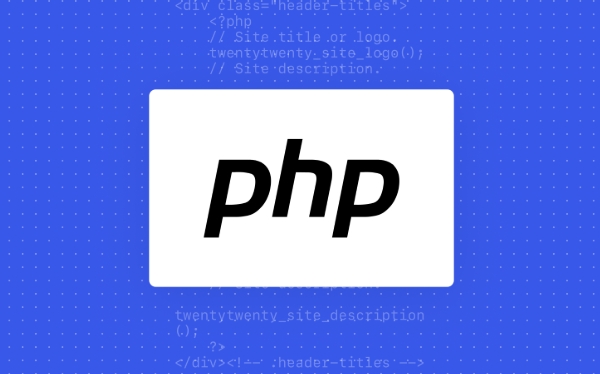 Backend Development
Backend Development
 PHP Tutorial
PHP Tutorial
 Multiline vs. Single-Line Comments: A Strategic Guide for PHP Developers
Multiline vs. Single-Line Comments: A Strategic Guide for PHP Developers
Multiline vs. Single-Line Comments: A Strategic Guide for PHP Developers
Jul 27, 2025 am 04:33 AMSingle-line comments (//) are suitable for short, local instructions or debugging, 1. Use // for in-line comments or temporarily disable code; 2. Use // for multi-line comments to provide detailed descriptions of complex logic or comment large pieces of code; 3. Use /*/ to write PHPDoc to implement structured documents and integrate with the IDE; 4. Avoid comments to comments to be obvious; 5. Always keep comments updated to ensure comments clearly convey intent rather than just describe operations, thereby improving code maintainability.

When it comes to writing clean, maintainable PHP code, choosing between multiline ( /* */ ) and single-line ( // or # ) comments might seem trivial—but the right choice can significantly impact readability, debugging, and team collaboration. While both have their place, understanding when and why to use each is key to writing professional-grade PHP.

When to Use Single-Line Comments
Single-line comments ( // or # ) are ideal for quick, localized explanations. They're lightweight and don't require closing syntax, making them perfect for inline notes or temporarily disabling code.
Use them when:

- You're explaining a specific line or short block of logic.
- You're debugging and want to comment out a few lines quickly.
- You're working within a section where brevity is more important than formality.
// Calculate user discount based on membership tier $discount = $user->isPremium() ? 0.2: 0.05; # Legacy fallback – remove after Q3 migration // $oldRate = getLegacyRate();
Tip: Stick with // over # —it's more widely used in PHP and consistent with C-style languages, improving cross-language readingability.
When Multiline Comments Are the Better Choice
Multiline comments ( /* ... */ ) shine when you need to provide detailed context, document complex logic, or wrap larger blocks of code. They're especially useful for formal documentation or commenting out entire functions.

Use them when:
- Writing function or class-level documentation (though PHPDoc is better—more on that below).
- Temporarily disabling a large block of code during development.
- Including copyright notices, changelogs, or licensing info at the top of a file.
/*
* This function calculates compound interest over time
* Parameters:
* - $principal: initial amount
* - $rate: annual interest rate (decimal)
* - $timesCompounded: yearly frequency
* - $years: duration
*/
function calculateCompoundInterest($principal, $rate, $timesCompounded, $years) {
// ...
} Note: Unlike // , /* */ comments can span multiple lines and even be nested in theory —but avoid nesting, as it can break syntax highlighting and confuse developers.
Don't Confuse Comments with PHPDoc
It's important to distinguish regular comments from PHPDoc blocks . For documenting classes, methods, parameters, and return types, use PHPDoc syntax with /** */ —not plain multiline comments.
? Correct:
/**
* Validates user input and returns sanitized data.
*
* @param array $input Raw user data
* @return array Sanitized and validated data
* @throws ValidationException If input is invalid
*/
function validateUserData(array $input): array
{
// ...
}? Not ideal:
/* * Validates user input... */
PHPDoc is structured, tool-friendly, and integrates with IDEs and static analyzers. Regular comments don't offer that.
Best Practices Summary
To make smarter commenting decisions:
- Use
//for short, line-specific notes or debugging. - Use
/* */for multi-line explanations or disabling code blocks. - Always use
/** */for PHPDoc—never substitute it with regular comments. - Avoid over-commenting obvious code (eg,
// set $x to 5). - Keep comments updated—outdated comments are worse than no comments.
Ultimately, the goal isn't just to comment, but to clarify intent. Whether single-line or multiline, your comments should help the next developer (or future you) understand why something was done, not just what it does.
Basically: match the comment style to the scope and purpose. Keep it clean, keep it useful.
The above is the detailed content of Multiline vs. Single-Line Comments: A Strategic Guide for PHP Developers. For more information, please follow other related articles on the PHP Chinese website!

Hot AI Tools

Undress AI Tool
Undress images for free

Undresser.AI Undress
AI-powered app for creating realistic nude photos

AI Clothes Remover
Online AI tool for removing clothes from photos.

Clothoff.io
AI clothes remover

Video Face Swap
Swap faces in any video effortlessly with our completely free AI face swap tool!

Hot Article

Hot Tools

Notepad++7.3.1
Easy-to-use and free code editor

SublimeText3 Chinese version
Chinese version, very easy to use

Zend Studio 13.0.1
Powerful PHP integrated development environment

Dreamweaver CS6
Visual web development tools

SublimeText3 Mac version
God-level code editing software (SublimeText3)

Hot Topics
 Multiline vs. Single-Line Comments: A Strategic Guide for PHP Developers
Jul 27, 2025 am 04:33 AM
Multiline vs. Single-Line Comments: A Strategic Guide for PHP Developers
Jul 27, 2025 am 04:33 AM
Single-line comments (//) are suitable for short, local instructions or debugging, 1. Use // for in-line comments or temporarily disable code; 2. Use // for multi-line comments to provide detailed descriptions of complex logic or comment large pieces of code; 3. Use /*/ to write PHPDoc to implement structured documents and integrate with the IDE; 4. Avoid comments to be obvious code; 5. Always keep comments updated to ensure comments clearly convey intentions rather than just describe operations, thereby improving code maintainability.
 The Perils of Nested Multiline Comments in PHP
Jul 26, 2025 am 09:53 AM
The Perils of Nested Multiline Comments in PHP
Jul 26, 2025 am 09:53 AM
PHPdoesnotsupportnestedmultilinecomments,andattemptingtonestthemcancauseunexpectedcodeexecutionorparseerrors;thefirst/closestheentirecommentblock,soanycodefollowingit—evenifintendedtobecommented—willbeexecuted,leadingtobugsorfatalerrorswhenfunctionsa
 Writing Clean File Headers: A Standardized Approach with Multiline Comments
Jul 25, 2025 am 11:13 AM
Writing Clean File Headers: A Standardized Approach with Multiline Comments
Jul 25, 2025 am 11:13 AM
Awell-structuredfileheaderimprovescodereadabilityandcollaborationbyprovidingkeyfileinformationupfront.1.Includethefile’spurpose,author,creationandmodificationdates,version,license,dependencies,andoptionalnotes.2.Useaconsistentmultilinecommentformatli
 How Modern IDEs Transform PHP Comments into Navigational Tools
Jul 25, 2025 am 04:43 AM
How Modern IDEs Transform PHP Comments into Navigational Tools
Jul 25, 2025 am 04:43 AM
PHPDoccommentsprovidetypehints,enableautocomplete,detecterrors,andsupportnavigationinIDEsbyactingasstructuredmetadata.2.Specialinlinecommentslike//TODOor//FIXMEareparsedintoactionabletasks,allowingdeveloperstonavigate,filter,andtrackworkdirectlyfromt
 Leveraging PHPDoc Blocks for Superior Code Maintainability
Jul 24, 2025 pm 10:25 PM
Leveraging PHPDoc Blocks for Superior Code Maintainability
Jul 24, 2025 pm 10:25 PM
PHPDocsignificantlyenhancesPHPcodemaintainabilityandclarity.1.Itprovidestypeclarityevenwithoutstricttyping,documentingparameters,returnvalues,andpropertieswithprecision.2.Itdescribescomplexreturntypeslikestructuredarrays,nullablevalues,anduniontypes,
 Mastering the Nuances of PHP Block Commenting
Jul 26, 2025 am 09:42 AM
Mastering the Nuances of PHP Block Commenting
Jul 26, 2025 am 09:42 AM
PHPblockcommentingisessentialfordocumentinglogic,disablingcode,andcreatingstructureddocblocks;1.Use//formulti-linecommentsbutavoidnesting,asitcausesparseerrors;2.Youcansafelyinclude//commentsinside//blocks;3.Alwayscloseblockcommentswith/topreventunin
 From Comments to Contracts: The Power of PHPDoc Annotations
Jul 25, 2025 am 04:41 AM
From Comments to Contracts: The Power of PHPDoc Annotations
Jul 25, 2025 am 04:41 AM
PHPDoccommentsarenotjustfordocumentation—theyserveasstructuredmetadatathatenhancecodereliabilityandmaintainability.1)TheyprovidetypehintsbeyondPHP’snativesyntax,allowingprecisedefinitionslikearrayornullabletypes,whichtoolslikePHPStanuseforstaticanaly
 The Unsung Hero: Enhancing Code Clarity with PHP Multiline Blocks
Jul 25, 2025 pm 02:29 PM
The Unsung Hero: Enhancing Code Clarity with PHP Multiline Blocks
Jul 25, 2025 pm 02:29 PM
PHP's Heredoc and Nowdoc are effective tools to improve code readability and maintainability. 1. Heredoc supports variable interpolation, suitable for dynamic content such as HTML or JSON; 2. Nowdoc does not parse variables, suitable for plain text output; 3. Both avoid the confusion of quotation escapes and string splicing, making multi-line strings clearer; 4. When using it, make sure that the end identifier occupies one line and has no front and back spaces; 5. Direct insertion of untrusted data should be avoided to prevent security risks; 6. Code readability can be enhanced through unified naming separators (such as HTML, SQL). Reasonable use can significantly reduce cognitive load and improve development efficiency.





